Biographies of the Signers of the Constitution
« Back to Annotated Constitution
President
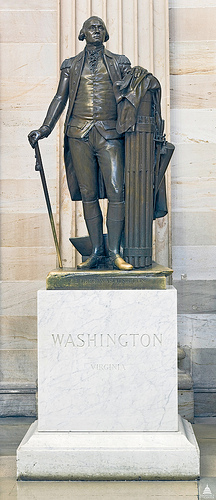
George Washington (1732-99), a Virginia planter of moderate means, is known as the “Father of the Country” and “The Indispensable Man” for his role in the formation of the United States. As Commander in Chief of the Continental Army he led American forces in defeating the most powerful military in the world at that time, and by resigning his commission at the close of the Revolutionary War he ensured that democratic civilian authority would prevail in the new nation. With the Articles of Confederation failing, the authority and support of George Washington was critical to the success of the Constitutional Convention. Unanimously chosen by the Electoral College as the first President of the United States, his administration set precedents that have held constant through subsequent American history.
New Hampshire
John Langdon (1741-1819) was a wealthy merchant of Portsmouth, New Hampshire who sat in the U.S. Senate (1789-1801). He served as state legislator and governor both before and after his congressional career.
Nicholas Gilman (1755-1814) was a New Hampshire merchant who served in the Confederation Congress after attending the Federal Convention. Despite going on to serve several consecutive terms in the House (1789-97) and later in the Senate (1805-14), he had a relatively inconspicuous congressional career.
Massachusetts
Nathaniel Gorham (1738-96), born in Charlestown to a merchant family of moderate success, had little education before establishing a successful business of his own. Active in local and colonial politics in advance of the Revolutionary War, he remained prosperous through privateering and speculation at its onset. During the war he served in the Continental Congress, including a year as its President. At the Constitutional Convention, he held the influential role of chairman of the Committee of the Whole. Following the Convention, he left politics to pursue a real estate venture that left him bankrupt until his death.
Rufus King (1755-1827), a Harvard-educated Boston lawyer, was a rising star in Massachusetts politics when he married a New York heiress and settled in New York City in 1786. This did not prevent him from representing his native state at the Federal Convention, although he represented his adopted New York in the U.S. Senate (1789-96 and again in 1813-25).
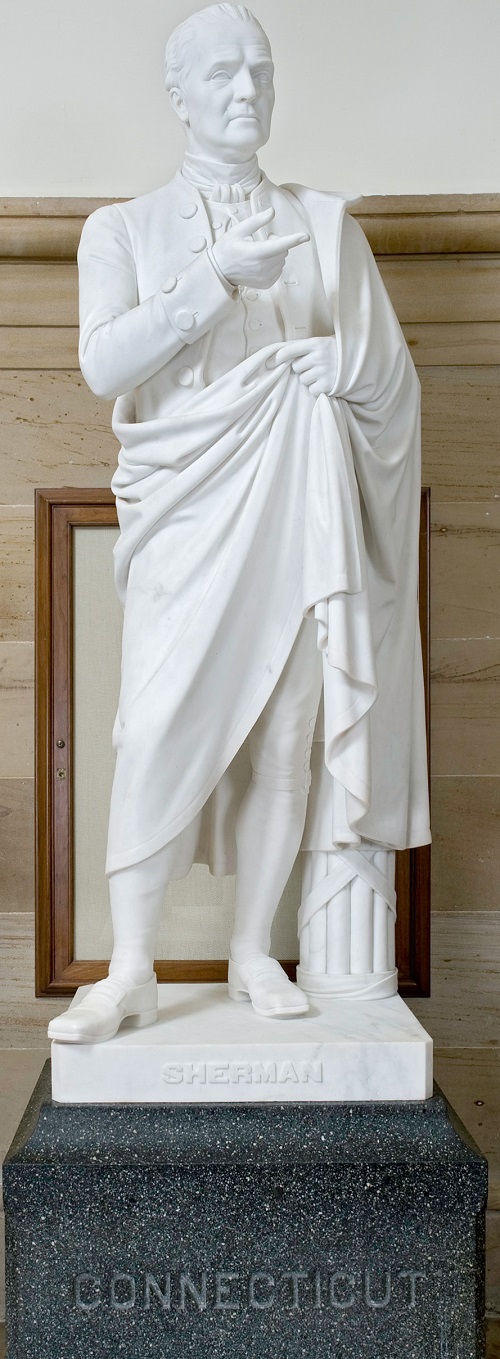
Connecticut
William Samuel Johnson (1727-1819) was a Yale-educated lawyer from Connecticut, best known for his thirteen-year term as the first non-cleric president of Columbia College (now University). He served in the Senate from 1789 until his college duties led him to resign in 1791.
Roger Sherman of Connecticut (1721-93), known as “Father Sherman” in deference to his age as well as his Puritan morality, was the only person to sign all four “founding documents” of the Revolutionary Era: the Articles of Non-Importation (1774), the Declaration of Independence, the Articles of Confederation, and the Constitution. This self-made man went on to serve in the U.S. House from 1789 until 1791, when he resigned to serve in the Senate until his death.
New York
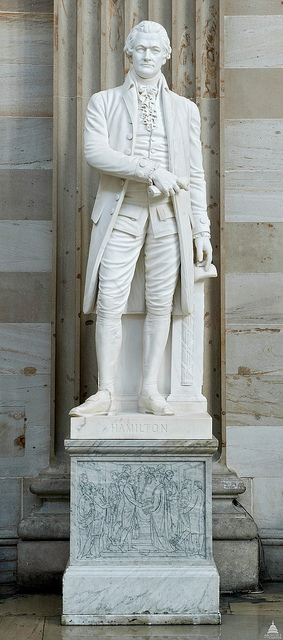
Alexander Hamilton (1755-1804), born the bastard son of a Scottish merchant on Nevis in the British West Indies, became one of America’s most prominent Founding Fathers. Orphaned in his teenage years, he was sent to New York by his community to pursue an education. Attending King’s College (later Columbia University) on a scholarship, he wrote pro-Whig pamphlets before the onset of the Revolutionary War. During the War he served as General Washington’s aide de camp and secretary, and later held a command under the Marquis de Lafayette during the decisive Battle of Yorktown. Following the War, he engaged in a successful legal practice and held various state political positions. At the Constitutional Convention, his nationalist views were considered extreme but influential. He authored 51 of the 85 Federalist Papers and was critical to the ratification of the Constitution. Serving as the first Secretary of the Treasury during the Washington Administration, he set precedents for American fiscal and banking policy that stand today as well as established the United States Coast Guard. His positions on debts, banking, and foreign intervention put him at odds with future presidents Thomas Jefferson and James Madison, which created the first party system in the United States. Following a falling-out with President John Adams, the most prominent member of his Federalist Party, and the exposure of an extramarital affair, he left political office but remained engaged behind the scenes. When the Electoral College deadlocked in the election of 1800, Hamilton backed ideological rival Jefferson over former colleague Aaron Burr, guaranteeing the former’s victory. Controversies during the 1804 New York gubernatorial election eventually led to a duel between Hamilton and Burr, during which Hamilton suffered mortal wounds. He died the next day.
New Jersey
William Livingston (1723-90), born in Albany, New York, became an attorney and popular political figure in advance of the Revolutionary War. Leaving his position as a delegate to the Second Continental Congress, he commanded the New Jersey militia as a Brigadier General until his election as the first governor of the state. He would go on to serve as Governor of New Jersey until his death. At the Constitutional Convention he missed many sessions due to gubernatorial duties, but remained an influential force in the slavery compromise effort and a strong advocate of the New Jersey Plan.
David Brearley (1745-90), born near Trenton, became an attorney and avid patriot in advance of the Revolutionary War. He was arrested by the British for high treason and freed by fellow patriots; he then served as an officer in the New Jersey militia, rising to the rank of colonel by the War’s end. Elected chief justice of the New Jersey Supreme Court, he established the principle of judicial review through his decision in Holmes v. Walton in 1780. At the Constitutional Convention, he chaired the Committee on Postponed Matters and backed the New Jersey Plan. After the Convention, he served as a Federal District Court Judge until his death.
William Paterson (1745-1806), of New Jersey, was a Princeton-educated lawyer and jurist who served in the Senate from 1789 until resigning the next year to serve as governor until 1793, when he resigned again to serve as associate justice of the Supreme Court until his death.
Jonathan Dayton (1760-1824), born in Elizabethtown (later Elizabeth) to a politically active shopkeeping family, graduated from the College of New Jersey (later Princeton) just in time to serve in the Revolutionary War. During the War he reached the rank of Captain serving under General Elias Dayton and the Marquis de Lafayette, and fought in the decisive Battle of Yorktown. Following the war he engaged in a successful legal practice and active political life. At the Constitutional Convention he was the youngest delegate at 26 years old and spoke on several occasions. Following the Convention, he held a seat in the US House of Representatives and served as Speaker during the Fourth and Fifth Congresses. During his Speakership he supported Alexander Hamilton’s financial plan, actions against the Whiskey Rebellion, and Jay’s Treaty. Appointed to the US Senate in 1799, he supported the Louisiana Purchase. Dayton was implicated in Aaron Burr’s failed attempt to create a new empire in the American Southwest and fell from national grace, but he continued to hold local and state offices. He died shortly after hosting the Marquis de Lafayette in his 1824 tour of America. As he owned 250,000 acres of land in the area, Dayton, Ohio is named for him.
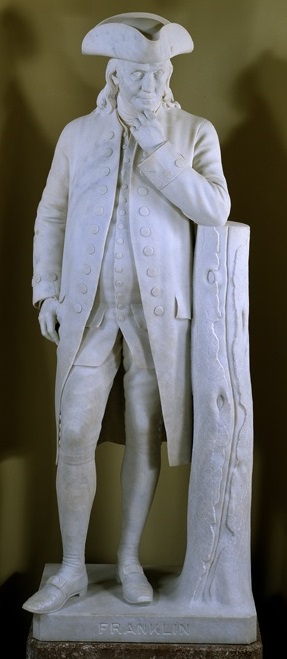
Pennsylvania
Benjamin Franklin (1706-90), born in Boston, Massachusetts to a soap and candle maker, became one of America’s foremost Founding Fathers. Primarily self-taught, he became a printer and inventor in his youth. In adulthood, he engaged in politics and diplomacy on behalf of the colony of Pennsylvania. Coming around to the patriot cause, he distinguished himself at the Second Continental Congress and helped draft the Declaration of Independence with Thomas Jefferson and John Adams. During the Revolutionary War, he served as commissioner to France where he helped secure the alliance that ensured American victory, and, with John Jay and John Adams, negotiated the Treaty of Paris in 1783 that ended the war. The oldest participant at the Constitutional Convention, his presence and prestige forged compromises that shaped the formation of the document. His final years were spent in service to the abolition movement, a cause to which he was committed throughout his life.
Thomas Mifflin (1744-1800), born in Philadelphia to a wealthy merchant and politician, studied at a Quaker school and the College of Philadelphia (later the University of Pennsylvania) before entering business and politics. A patriot politician in advance of the Revolutionary War, he served as quartermaster general of the Continental Army during the War and reached the rank of major general. Because of his wartime service, he was expelled from his pacifist Quaker faith. Known to prefer battlefield action to administration, he resigned his post due to criticism of his logistical efficacy. Following the war, he held a seat in the Confederation Congress and served as the body’s president for a term. At the Constitutional Convention he attended most sessions but seldom spoke. After the Convention, he served nine years as governor of Pennsylvania before dying in debt.
Robert Morris (1735-1806) was a major Philadelphia merchant who became leader of the “centralist” (proto-Federalist) forces in Pennsylvania. He served as the Confederation Congress’s only superintendent of finance (1781-84), perhaps the most powerful single executive officer in national politics before the Constitution. He sat in the U.S. Senate from 1789 to 1795 before the failure of several extensive land speculation schemes reduced him to poverty and imprisonment for debt.
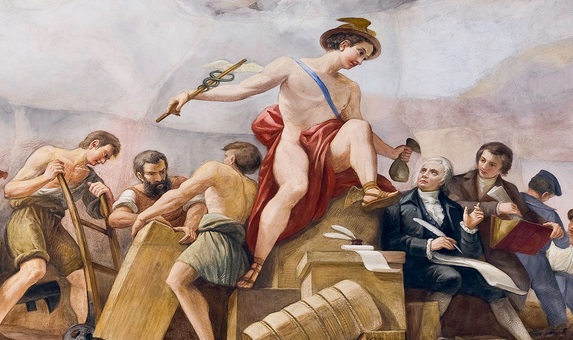
George Clymer of Pennsylvania (1739-1813) was a Philadelphia merchant who also signed the Declaration of Independence. He served a single term in the House (1789-91) and then served briefly as a federal excise collector and as an Indian treaty commissioner.
Thomas FitzSimons of Pennsylvania (1741-1811) was a Philadelphia merchant who later served in the US House (1789-95). A native of Ireland, he shares with Daniel Carroll the distinction of being the only Catholic signers of the Constitution.
Jared Ingersoll (1749-1822), born in New Haven, Connecticut to a colonial official and noted loyalist, became one of the most prominent lawyers of his day. Receiving his education at Yale and London’s Middle Temple, he came to the patriot cause while touring Europe as a young man. When he returned to Philadelphia, he engaged in a successful legal practice and political career and served in the Continental Congress during the Revolutionary War. At the Constitutional Convention he attended all sessions but rarely spoke. After the Convention, he earned much renown for his participation in such Supreme Court cases as Chisholm v. Georgia and Hylton v. United States.
James Wilson (1741-98), born near St. Andrews, Scotland, emigrated to Philadelphia during the tense period surrounding the Stamp Act. Engaging in an at-times successful legal and land speculation career, he became involved in revolutionary politics by writing pamphlets that would gain wide circulation. As a member of the Continental Congress, he signed the Declaration of Independence before shifting to a more conservative ideology and struggling to maintain his seat, which he held off and on throughout the Revolutionary War. At the Constitutional Convention, he was only surpassed in influence by James Madison and in number of speeches by Gouverneur Morris. After the Convention, he was appointed an associate justice of the United States Supreme Court, a post he would hold until his death. He continued to engage in risky land speculation on the frontier and died while avoiding arrest for unpaid debts.
Gouverneur Morris (1752-1816), born in Westchester (later Bronx) County, New York to a wealthy family, became a critical figure in the creation of the Constitution. He lost a leg in a carriage accident in his youth but went on to study at King’s College (later Columbia University) and was admitted to the New York bar. Initially conservative in politics, he adopted the Whig cause for independence and helped draft New York’s State Constitution. During the Revolutionary War he served in the New York militia and the Continental Congress, critically assisting General Washington with political support. After losing his seat, he relocated to Philadelphia where he assisted Robert Morris (no relation) in financing the war. A leading figure at the Constitutional Convention, he spoke frequently and is believed to have drafted the Constitution as it was ratified. After the Convention he served as a diplomat in Europe during the Washington administration and completed a term in the US Senate. After chairing the Erie Canal Commission, he died in retirement.
Delaware
George Read (1733-98), a wealthy lawyer of New Castle, Delaware, held many offices in the state and as a member of the Continental Congress before attending the Federal Convention. He sent on to serve in the US Senate from 1789 until resigning in 1793 to serve the remainder of his life as his state’s chief justice.
Gunning Bedford Jr. (1747-1812), born in Philadelphia to a distinguished family, served as a lawyer and fought in the Revolutionary War prior to the Constitutional Convention. While serving as Delaware’s Attorney General, he was an active and forceful participant in the Convention, advocating for the rights of small states. During the Washington administration he was appointed a federal judge, a post he held until his death.
John Dickinson (1732-1808), born in Talbot County, Maryland to a wealthy farming family, became known as the “Penman of the Revolution.” His integrity and brilliance as a colonial politician earned him the respect of allies and enemies alike. In the run-up to the Revolution, he wrote convincingly on the grievances of British rule. A staunch advocate of nonviolent resolutions and opposed to separation from the Crown, he nevertheless was one of two members of the Second Continental Congress to join the military effort. At the Constitutional Convention he served on the Committee on Postponed Matters and helped forge the Great Compromise. Being forced to leave the Convention early by illness, he authorized George Read to sign the document on his behalf. In retirement he continued to write on politics until his death.
Richard Bassett of Delaware (1745-1815), born in Cecil County, Maryland to a tavern-keeping family, became was a wealthy planter and attorney prior to the American Revolution, at which time he led a Delaware cavalry militia. An avid attendee of the Constitutional Convention, he made no speeches but cast votes on all issues that arose. Following the Convention, he served in the US Senate from 1789-93 and was an unsuccessful “Midnight Appointment” to the federal bench of the outgoing Adams administration in 1801. He died in retirement.
Jacob Broom (1752-1810), born in Wilmington to a prosperous blacksmith and farming family, held various local government offices prior to the Constitutional Convention. During the Convention he was present for all meeting sessions and spoke at several points. Following the convention, he returned to Wilmington where his local and state governmental posts and philanthropic activities occupied his time until his death.
Maryland
James McHenry (1753-1816), born in County Antrim, Ireland to a merchant family that immigrated with him to the American Colonies in 1771 and 1772, studied medicine under Dr. Benjamin Rush in advance of the American Revolution. During the war, he served as an Army surgeon before being captured at Fort Washington, New York. Upon his parole he served as a secretary for Generals Washington and Lafayette until he entered Maryland politics. At the Constitutional Convention he made little impact in the way of speeches, but his detailed journal has proven invaluable to historians. Following the Convention, he served as secretary of war to both Presidents Washington and Adams before his retirement and death. Fort McHenry in Baltimore is named for him.
Daniel of St. Thomas Jenifer (1723-90), born in Charles County to a wealthy family, became a prominent colonial political figure in Maryland. Despite his conservative background, he was a strong supporter of the Revolution in the state’s leadership. At the Constitutional Convention he attended every session and, though he supported James Madison’s positions, he spoke infrequently. Never married, he died in retirement shortly thereafter.
Daniel Carroll (1730-96), known as “of Rock Creek” to distinguish himself from several cousins of the same name, was a major landowner and planter in the part of his native Maryland that became the District of Columbia, a shift which he voted for as Representative (1789-91).
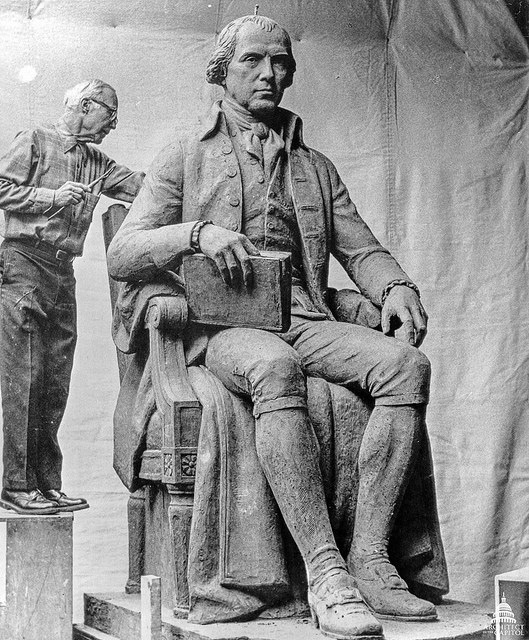
Virginia
John Blair (1732-1800), born in Williamsburg to the prominent political and academic Blair Family, studied at the College of William & Mary and London’s Middle Temple before entering colonial politics. A staunch and important supporter of the cause for independence, he held various political and judicial posts through the Revolutionary War. At the Constitutional Convention, he attended every session but made no speeches. Following the Convention he was appointed an associate justice of the Supreme Court in 1789. He retired to Williamsburg from that post in 1796, where he remained until his death.
James Madison (1751-1821) of Virginia was not only one of the most important members of the Federal Convention, but went on to become the informal “majority leader” during the early period of his career in the US House (1789-97), during which he shepherded the first amendments to the Constitution through Congress. He went on to serve as a state legislator, secretary of state under his good friend Thomas Jefferson (1801-09), and president (1809-17).
North Carolina
William Blount of North Carolina (1749-1800) was a planter and land speculator from a powerful mercantile family. He served as a state legislator and member of the Confederation Congress before his appointment as first governor of the Southern Territory (1790-96). He was elected to the US Senate in 1796, but shortly thereafter his seat was “sequestered” and he was effectively expelled for participating in a conspiracy to oust the Spanish from Louisiana.
Richard Dobbs Spaight of North Carolina (1758-1802) served as a Continental Army officer, a member of the Confederation Congress and state legislature, and governor before being appointed to serve out a brief, unexpired term in the US Senate (1799-1801). Defeated for reelection, he was killed in duel with his successful opponent.
Hugh Williamson of North Carolina (1735-1819), was a native of Pennsylvania who practiced medicine but earned a wider reputation for his literary and scientific pursuits. He served as a member of the Confederation Congress and then the U.S. House (1789-93).
South Carolina
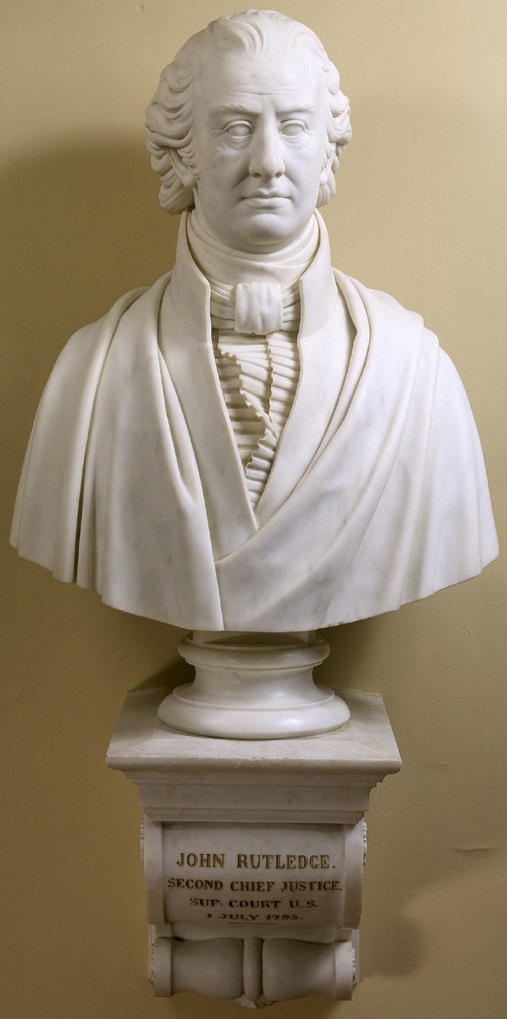
John Rutledge (1739-1800), born in Charleston to a large and prosperous immigrant family, built a fortune through his legal practice and ownership of plantations and slaves. As a colonial political figure he was a moderate on the topic of independence, but embraced the cause when serving as a state legislator and governor during the war. When Charleston fell to the British in 1780, he fled to North Carolina where he sought forces to take back the state, eventually doing so with General Nathaniel Greene in 1781. At the Constitutional Convention he was a frequent and effective speaker and serve on five committees. Following the Convention, Washington appointed him associate justice of the Supreme Court and later as chief justice. Rutledge served one term in the position before the Senate refused to confirm him, in part due to ill health. He retired to Charleston where he remained until his death.
Charles Cotesworth Pinckney (1746-1825), born in Charleston to a politically prominent planter family in South Carolina, enjoyed a renaissance education in Europe before establishing his legal practice and engaging in politics. A Patriot politician in advance of the Revolution, he joined the South Carolina militia at the onset of the war and led a regiment in several major campaigns before being captured in 1780. Released in 1782, he returned to his legal practice and service in the state legislature. At the Constitutional Convention, he was a staunch advocate for a strong national government. After the Convention, he served as Minister to France and was involved in the XYZ Affair, refusing to pay the bribes demanded by French officials. An unsuccessful Federalist candidate for vice president in 1800 and president in 1804 and 1808, he went on to hold leadership roles in philanthropic groups until his death.
Charles Pinckney (1757-1824) was a wealthy lawyer and planter of Charleston, South Carolina. He was the second cousin of Charles Cotesworth Pinckney and fought in the Revolutionary War before becoming one of the youngest delegates at the Constitutional Convention. During his long career, he served also terms in the Continental and Confederation Congresses and the state legislature; held the governorship of South Carolina and was minister to Spain; and served in the US Senate (1798-1801) and House (1819-21).
Pierce Butler (1744-1822) was a former British Army officer who married into South Carolina wealth and had extensive plantations in Georgia and South Carolina, which he represented at the Federal Convention and later in the Senate (1789-96).
Georgia
William Few (1748-1828) was born in Maryland but lived in Georgia from 1776 to 1799 before disgust with slavery led him back north to New York City. After representing his adopted state in the Continental and Confederation Congresses (1780-82 and 1786-88), this wealthy planter served in the US Senate (1789-93).
Abraham Baldwin of Georgia (1754-1807) was a Yale-educated native of Connecticut who represented his adopted state in the House (1789-97) before moving on to the Senate (1799-1807). He is the only signer of the Constitution buried in Washington, DC.
Authors: William C. diGiacomantonio and Samuel Holliday
Sources:
DiGiacomantonio, William. “Constitution Day: Signers Who Went to Congress,” U.S. Capitol Historical Society–A Blog of History. Accessed 9.14.2016.
National Archives and Record Adminstration. “American’s Founding Fathers: Delegates to the Constitutional Convention.” Accessed 9.16.2016.
National Park Service. Robert G. Ferris, series editor. Signers of the Constitution: Historic Places Commemorating the Signing of the Constitution. Washington, DC: 1976.








